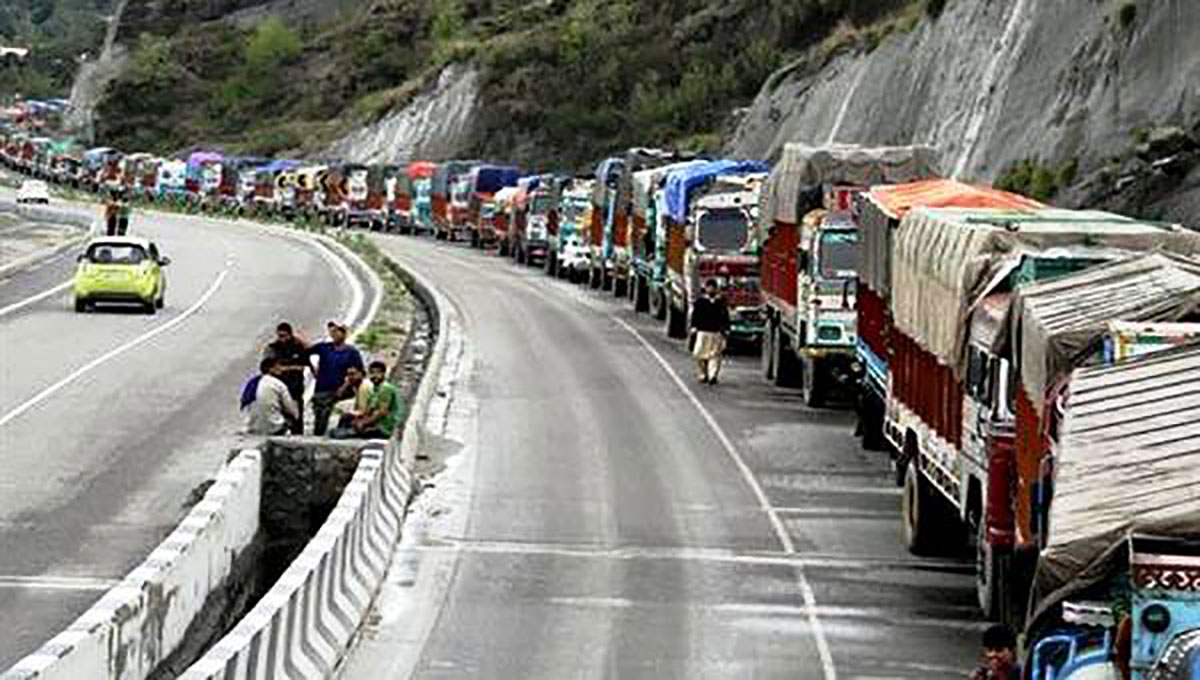Precious lives are lost every year to wild animals foraying into human habitations, however, the government seems to be doing little to avert such situations or reaching out to these victims with relief. Junaid Nabi Bazaz reports

Bedridden in a room filled with fear, Gulzar Ahmad Bhat of Harwan Srinagar is trying to escape the thoughts of the bear attack he suffered in his orchard close to his home. The attack left him badly injured and in immense pain. His face was smashed and lost an eye while his other eye is also damaged.
“His face structure is completely different to what it was,” says his son while applying medicine to Gulzars damaged eyes. Recalling the incident Gulzar says, “I was busy in routine work in our orchard near my home. Suddenly my back received a heavy blow. I turned and saw a large grey bear before me, who in no time started raining blows on me.”
“I was getting unconscious. Meanwhile, people heard my screams and rescued me.”
He was removed to Sher-i–Kashmir Institute of Medical Sciences Soura where he was admitted for a few days.
His relatives say that Gulzar is the only breadwinner in his five-member family. But the attack has left him maimed and sent him out of work accentuating the family’s misery.
In the last five years, the Jammu and Kashmir Wild Life department says, at least 135 people have been killed and 1328 others injured in attacks by wild animals in the state. Among the casualties, 110 deaths and 1108 injuries were reported in the Kashmir region alone.
The state government has a policy to pay compensation to the victims or their families in case of death – one lakh rupees for the death and some amount for the damaged property and livestock.
The Wild Life department claims that 1131 cases of injury out of 1328 have been settled. However, the victims say it is insufficient and is not paid in time when it is most needed.
A young man from Khrew village on the outskirts of Srinagar was attacked by a bear in his village seven months ago and was wounded in the incident. He says he is yet to receive any compensation from the Wild Life department.
“I have now almost recovered from the injury but still have not received any compensation. It should have been given to me at the time of attack when I needed it,” he laments while holding a bag of files outside the Wild Life office at Dachigham National park. He says, “I have visited many offices during these months, but each time the concerned officers tell me that ‘your documents are complete and it only needs some signature from some higher up’. However, I am still waiting for the promised relief.”
Gulzar also has to face the same problem. His dependent family has not received any compensation; not even for the medical expenses, they say. “This loss should have been compensated with something that would run our livelihood,” says his wife. “It will take a lot of time for the process to get completed. Shall I look after the house or visit office after office?”
She looks after the family and works odd jobs to earn a livelihood and feed her husband and school-going children. Wild Life Warden Rashid Naqash says that it takes time to complete official procedures. “There is a process and it takes months to scrutinize the cases.”
Though wild animal foraying into habitations and attacking people is an old phenomenon, the human casualties from such attacks have been rising in the last few years. Experts point out three main reasons for the increased man-animal conflict. Loss of natural food base in their habitats makes bears as well as leopards to turn to inhabited villages for food. Secondly, the intolerance and lack of knowledge about the behaviour of wild animals among people who live close to the forests. Third the security situation in the state has seen the heavy deployment of troopers in forests and the limiting of the movement of wild animals by fencing of LoC (Line of Control) and planting of landmines on both sides of this fence.
Animals may not recognize borders drawn by humans but the three-meter high fencing on the 742 kilometres of Line of Control (LoC) is restricting the movement of these animals. “Animals have a cruising range. In the case of a leopard, it is between 25 and 40 square kilometres. When you limit the range, it moves out of its ecological niche,” experts say. “The result will be that the animal will either fall in conflict with humans or die of stress.”
Meanwhile, the Wild Life department claims to be mulling strategy to reduce the man-animal conflict and educating people living close to forests on the best ways to deal with such situations.
Warden Naqash says, “Very soon we will start a drive-in various villages to educate people how to deal during such situations. This will help us a lot in reducing it (casualties) to a large extent.”















